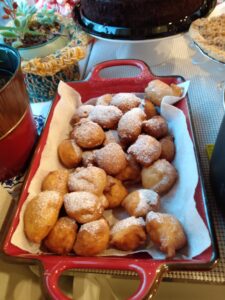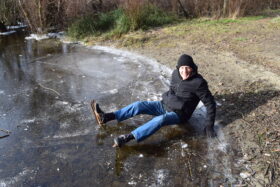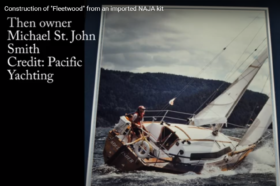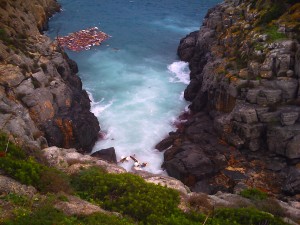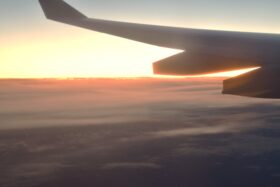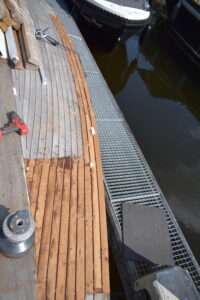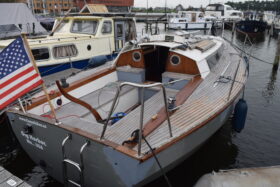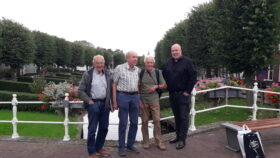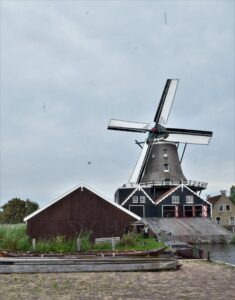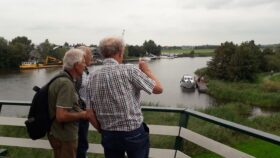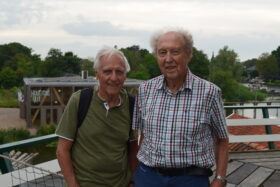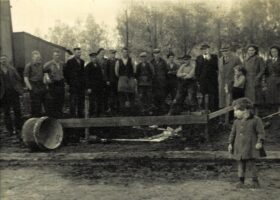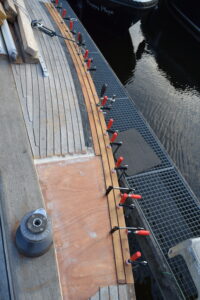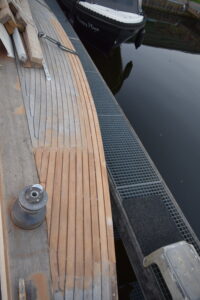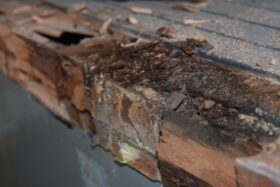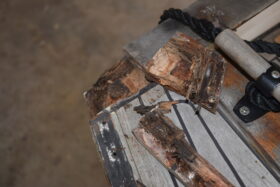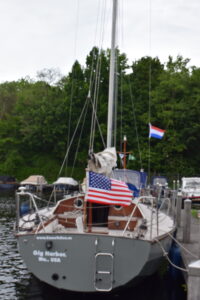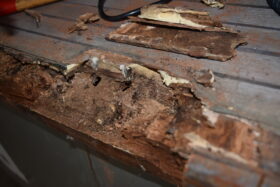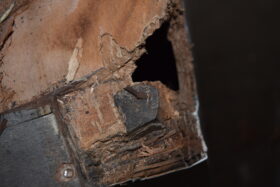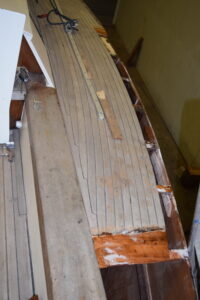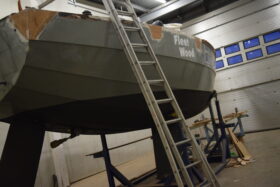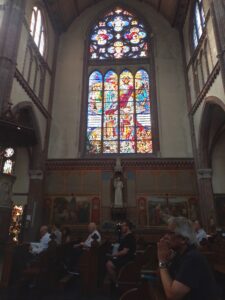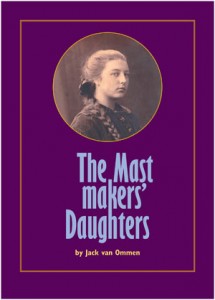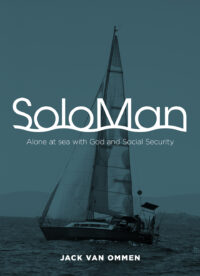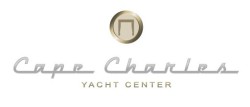By coincidence September 5th this year also falls on a Tuesday. The allies rapidly approached Holland, collaborators and even soldiers made a mad rush for the German border. The Allied Forces, since the June landing in Normandy had steam rolled up to the Dutch border. But what appeared to be the imminent liberation of the S.S. concentration camp “Vught” turned out to be the beginniing of a train ride to the hell of the Ravensbrück women concentration camp. About 1/3 of the 650 women pressed in these cattle cars would not survive this camp. And from this date onward the worst partof the war would be the hell of the so called “Hunger Winter” until the May 5th 1945 capitulation. Our mother, fortunately, together with app. 200 other, mostly, Dutch political prisoners ended up in a satelite camp of Dachau where the survival rate was 99%. But the terror for these women and there loved ones at home was that there was no commonucation allowed. And our father did not know anybetter than our mother being in the hell hole of Ravensbrück until two days before the return of our mother on May 22nd 1945. The Dutch Red Cross dropped the ball and several of the Dutch prisoners that were released in this period from Ravensbrück, like Corrie ten Boom, could have notified the families in Holland. The below are excerpts from my books “The Mastmakers’ Daughters and “De Mastmakersdochters”.
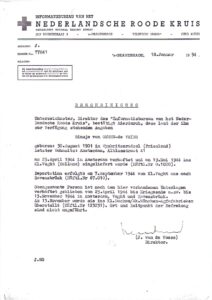
Dutch Red Cross statemment
September 5th 1944 Mad Tuesday in Camp Vught
We, the hundred odd women, in our satellite camp at the Michelin factory in Den Bosch, heard from the civilian factory personnel that the British forces were on their way from Belgium. There was a festive mood amongst us; we sang the songs that for the most part were composed here. We used to sing them softly, several of them were a bit rough and mocked our common enemy, but we became bolder by the minute and it seemed that the louder we sang them the more scared our guards reacted. One of the communist women began to sing the “Internatonale” which was promptly followed up by all, with our national anthem, the “Wilhelmus”.We watched with amazement the feverish activity on the factory floor, gasmasks were hurriedly crated up, and complete sets of machinery were disassembled and loaded into boxcars.
When the long train was filled the German production boss and his team also mounted the train, accompanied by our loud jeers. We hoped that we would never see them again.
There was nothing to do for us any longer in the factory. Our guards took us back to our barracks.
Three R.A.F. fighter planes flew low over the camp, that evening. This show of force removed any lingering doubts that freedom was only hours away.
Later in the evening, we were brought in a variety of vehicles to the main camp Vught. It was late and the women there were already asleep. There were no empty beds for us and we had to crawl into any available cot with a sleeping prisoner, to the annoyance of the sleeping woman. But because we had witnessed the exodus from our factory, we had news for them and now everyone was participating in the mounting euphoria. We stayed awake and celebrated for most of the night.
The excitement grew by the hour. The sound of the artillery of our liberators grew louder and closer and it was sweet music to the prisoner’s excited ears. The guards and the despised Aufseherinnen had shrunk away into the back ground. If one of them dared to show themselves in the barracks, it was done with an exaggerated display of courtesy.
No one went to work that day and we were all treated to coffee with sugar from the SS kitchen. Some of the women lit a smoke without any interference. Plans were being formed as to how we would be reunited with our loved ones. We exchanged addresses and assured one another that we would stay in touch after we were free. A rumor made the rounds that the Red Cross would take over the supervision of the camp and that we would be quartered with farmers in the neighborhood, temporarily. It was certain that the Allied Forces would be there within hours and that the German enemy had been brought to their knees. The guards were packing and would soon be on their retreat.
Riffle fire could be heard from the direction of the male prison camp. We assumed that this had to be close combat with the liberators. But the women who had been here for a longer period knew better. The riffle fire came from the execution range. After the riffle folly, there would be a single shot, the coup de grace. One-hundred-forty-two male prisoners were executed in the last three days before the camp was evacuated.
The head executioner in Camp Vught was SS Sturmbannführer-Major Erich Deppner, these murders are still known as the Deppner Executions. His career started under Hans Albin Rauter, the highest SD boss in the Netherlands and Willy Lages of the SD in Amsterdam who worked directly under Rauter. Heinrich Himmler complimented Deppner personally for his first successful execution of 72 Russian prisoners of war in camp Amersfoort in April 1942. Deppner was captured in Berlin in 1945 by the Russians who released him in 1950. Next, he found shelter with the U.S. Armed Forces who managed to make good use of his “way around town”. The Dutch government requested the American Authorities for Deppner’s extradition, to stand trial for his atrocities. The Americans refused the Dutch requests. Deppner lived in comfort and peace in Germany until his natural death in 2005.
The next day, around noon, we all received a warm meal from the SS kitchen and once more coffee with sugar. The Germans obviously wanted to leave better last impressions for the liberators as to how we had been treated. But the sound of the artillery from the approaching Allied forces became weaker and our euphoria diminished at the same rate. The riffle fire from the executions had also stopped. “It is probably a pause in the fighting” was suggested. But the hours went by and then we came to the realization that it was a bit unrealistic that the British would go out of their way to liberate a few thousand prisoners in the nearest concentration camp. They probably had a couple more strategic targets to deal with, like the port of Antwerp.
We were back on the same sour bread diet that evening and the coffee was the usual brown tasteless liquid without sugar. The festive mood changed into disappointment and a deep concern as to what was in store for us now.
From Vught into the unknown
We were ordered to stand in formation on the exercise field of the camp early in the morning of September 6. Everyone was given a blanket and a chunk of bread and we were then marched to the rail depot of the concentration camp. A long line of cattle cars stood stretched out on the tracks. The male prisoners had already been stuffed in the forward cars. My group, of about 100 women from the Michelin factory detail, had grouped our selves together. Most of my group, 82 women, managed to end up in the same cattle car. These cars were meant to carry a maximum of six cavalry horses….The heavy wooden doors were shut and we heard a lock and chain being attached. We could only stand up and barely move. There was a latrine barrel in one corner and no water. The first thing we did was, with our wooden shoes, to break the wooden slats from the blinds in the small windows, to give us a little more air. We deposited all our bread rations in one corner as far away as possible from the latrine. One woman was assigned to distribute the bread. Next, we divided our group in three sections of 27 women to take turns in standing, sitting and stretched out on the floor. Now we had a plan and we felt a little more in control. The train started moving slowly. It felt as if the Lord stretched his arms out over us with a blessing when two young women softly started singing the Dutch version of:
Abide with me, fast falls the even tide.
The darkness deepens; Lord with me abide.
When other helpers fail and comforts flee,
Help of the helpless, oh, abide with me.
And the fourth verse:
I fear no foe with thee at hand to bless;
Ills have no weight, and tears no bitterness.
Where is death’s sting? where, grave, they victory?
I triumph still if thou abide with me.
More and more women in our car and along the track joined in.
Mad Tuesday in Hilversum
In the first week of September, Rennie Arendt (the other Nazi Mastmakers’ daughter) was told by the German authorities in Hilversum to pack her suitcases and be ready for evacuation to Germany. A special train stopped in Hilversum on September 5, “Mad Tuesday”. Rennie and her two sons climbed aboard. Georg was then fourteen and Gerard was nine. Uncle Jentje brought them to the station and he had an address for them of an acquaintance in Neumünster, Holstein, not far from where they had lived in Holtenau.
Three railway wagons were painted with red crosses and filled with wounded German soldiers. Just before crossing into Germany, the train was attacked by two American Thunderbolts. All the windows were broken, there were several casualties, and many injured. Rennie was cut by the shattered glass. When Georg, years later, had a tooth pulled the dentist also removed a matchbox full of glass splinters from his cheekbone. Gerard escaped the attack without a scratch.
En de Nederlandse versie uit “De Mastmakersdochters”:
39 Dolle Dinsdag in kamp Vught
Op de Michelin fabriek, waar ik zat met een honderd lotgenoten, hoorden we van het vaste fabriekspersoneel dat de Engelsen in aantocht waren vanuit België. Wij raakten ook in feeststemming en we zongen ons repertoire van, meest zelf gedichte, liedjes. Liedjes die we stiekem zachtjes in de barakken zongen, als de Aufseherinnen niet in de buurt waren. Maar nu lieten de bewakers ons onze gang gaan. We werden steeds moediger en het leek wel of hoe harder we zongen de banger de vijand werd. Een van de Communisten zette de “Internationale” in en daarna werd het “Wilhelmus” uit volle borst gezongen. Er heerste paniek in de fabriek. Gasmaskers werden in kisten verpakt. Complete productiemachines werden gedemonteerd en in klaarstaande spoorwagons geladen. Ten slotte verdwenen ook de Duitse bedrijfsleider en zijn ploeg in de trein, onder ons luid gejoel. Er was voor ons niets meer te doen in de fabriek. De bewakers brachten ons terug in de barakken. Die avond vloog een stel R.A.F.-jagers laag over. De laatste twijfel werd hier mee weggevaagd.
Later in de avond werden we in allerlei soorten van vervoer van onze fabriek barakken naar het kamp Vught gereden. Het was laat en de gevangen waren al in slaap. Er waren geen lege kribben dus we moesten maar hier en daar bij een al slapende vrouw inkruipen, tot ergernis van de uit de slaap gewekte lotgenoten. Maar al gauw waren we allemaal wakker en bleek het dat wij, van buiten het kamp, al veel meer wisten van de haast waarmee de vijand aan het afdruipen was. Dus werd er druk heen en weer aan de euforie deelgenomen. En van slapen kwam niet veel meer. Tegen 12 uur, de volgende dag, kregen we een warme maaltijd uit de SS-keuken en weer koffie met suiker. Het was nogal doorzichtig wat de opzet van de verbeterde verzorging was. De Duitsers wilden de indruk achterlaten aan de bevrijders dat het toch niet allemaal zo slecht geweest was in kamp Vught.
De atmosfeer werd steeds feestelijker. Het geluid van de kanonnen van onze bevrijders werd bij het uur duidelijker te horen en klonk als muziek die het feest opluisterde. De bewakers en Aufseherinnen waren in de achtergrond weggeslonken en als er een zich in onze barakken waagde dan was dat met een overdreven vertoon van vriendelijkheid. Er werd niet meer gewerkt en we kregen allemaal koffie met suiker uit de SS-keukens en we konden ongestoord een sigaretje opsteken. We begonnen ons een beeld te vormen hoe we met onze geliefden weer zouden verenigd worden. Adressen werden uitgewisseld, we moesten in contact blijven.
Er bestond geen twijfel dat de Geallieerden in de aanstaande uren voor de deur zouden staan en dat de Duitse vijand op de knieën was gebracht. En we wisten dat onze bewakers aan het pakken waren en spoedig op de vlucht gingen.
We konden nu ook regelmatig geweervuur horen dat uit de richting van het aangrenzende mannenkamp kwam. Wij concludeerden dat dit al gevechten waren met onze bevrijders. Maar de vrouwen die hier al langer zaten wisten wel wat dat betekende. Dat geweervuur kwam van de fusilladeplaats. Na het salvo volgde een enkel schot, het genadeschot. Daaraan konden wij optellen hoeveel er geëxecuteerd werden. 142 mannen werden die laatste dagen voor Dolle Dinsdag vermoord.
Maar bij het afzwakken van het geschut van onze bevrijders zakte onze hoop en onze verwachtingen. Het geweervuur van de executies was ook afgelopen. “Het zal wel een pauze in het gevecht zijn”, dachten we. Maar met de uren zonder nieuwe tekenen van de bevrijding begrepen we dat het misschien toch wat te onrealistisch was dat de geallieerden optrokken om onze paar duizend gevangenen in het dichtstbijzijnde concentratiekamp te bevrijden. Ze hadden waarschijnlijk belangrijkere doelen op het oog.
Die avond waren we weer terug op hetzelfde vieze zure brood en de koffie was weer dezelfde bruine drab zonder suiker. De feestvreugde wisselde in teleurstelling en grote bezorgdheid voor wat de volgende dagen zouden brengen
40 Naar onbekende bestemming
De volgende morgen, woensdag 6 september moesten we in de vroegte allemaal aantreden op de appèlplaats. Iedereen kreeg een deken en een stuk brood daarna werden we afgemarcheerd naar het kamp spoorweg depot. Een lange rij veewagons strekte zich op het spoor uit. De mannelijke gevangenen waren al in de voorste wagons geladen.
Wij, ongeveer 100 vrouwen van de Michelin fabriek, uit een totaal van rond 650 vrouwelijke gevangen, hadden ons al zoveel mogelijk bij elkaar gegroepeerd en kwamen voor het merendeel in dezelfde veewagon terecht. Toen de bewakers er 82 van ons in de wagon geperst hadden werden de houten schuifdeuren gegrendeld en we hoorden ze een ketting aanbrengen en het klikken van een slot.
We realiseerden ons dat we, in een veewagen bestemd voor het vervoer van maximaal zes paarden, als 82 vrouwen makkelijk verstikken konden of onder de voet gelopen worden. Het eerste dat we deden was met onze klompen de houten horren latjes uit de venstertjes te slaan, dat gaf ons wat meer lucht. Alle broodrantsoenen werden in een hoek opgestapeld, zo ver mogelijk weg van de latrine kan. Een van de vrouwen nam op zich verantwoordelijk te zijn voor het rantsoeneren van het brood. Drinkwater was er helemaal niet. Daarna hebben we onze groep in drie secties verdeeld die afwisselend, stond, zat of zich uitstrekken kon.
We hadden nu op zijn minst een plan en voelden ons wat minder onmachtig onder de omstandigheden die ons te wachten stonden. Het was alsof God zegenend zijn handen over ons uitstrekte toen in het donker twee meisjes zachtjes begonnen te zingen:
Blijf bij mij, Heer[2], want d’ avond is nabij.
De dag verduistert, Here, blijf bij mij!
Als and’re hulp m’ ontbreekt, geluk m’ ontvliedt,
der hulpelozen hulp, verlaat mij niet!
En het prachtige vierde couplet:
Geen vijand vrees ik, als Gij bij mij zijd,
tranen en leed zijn zonder bitterheid.
Waar is, o dood, uw schrik, graf, waar uw eer?
Meer dan verwinnaar blijf ik in de Heer
En het koor zwol aan. We hadden van elkaar al veel teksten uit het hoofd geleerd. Van mijn zingende moeder kende ik veel psalmen en gezangen.
38 Dolle Dinsdag in Hilversum
Rond de eerste september 1944 kreeg Rennie Arendt-de Vries te horen van de Duitse overheid dat ze voor haar en haar twee zonen ieder een koffer moest pakken en zich gereedhouden voor evacuatie naar Duitsland. Op “Dolle Dinsdag” 5 september 1944 kwam een speciale trein vanuit Den Haag, via Amsterdam die ook in Hilversum stopte.
Georg was toen veertien en Gerard negen. Het drietal werd door “de Baron” naar het station gebracht. Hij had ook een adres voor hen van een Hilversummer die hij kende en die in Neumünster, Holstein werkte als buschauffeur. Niet ver van Holtenau, waar Rennie opgegroeid was.
De speciale trein werd getrokken door een Nederlandse locomotief, een lange rij wagons, drie ervan waren beschilderd met grote rodekruizen voor gewonde Duitse soldaten. Net voor de Duitse grens werd de trein bestookt door twee Amerikaanse Thunderbolts. Alle ruiten waren kapot, er vielen doden en veel van de passagiers liepen verwondingen op. Rennie zat vol glassplinters, Georg vertelde jaren later dat de tandarts in 1984, samen met een kies, een luciferdoosje vol glassplinters uit zijn kaak haalde. Gerard had geen enkel schrammetje opgelopen.
Uit het Dagboek van Dick van Ommen, de echtgenoot van Rennie:
4 September
Geallieerde troepen de Hollandse grens overschreden.
5 September “Dolle Dinsdag”
Wilde geruchten, ze zijn in Breda, Dordrecht, Rotterdam, den Haag, Leiden. De dokter kwam vertellen dat het van Jaap wel diphtherie was, nu mogen de jongens niet meer naar school, vanavond om 8 uur binnen zijn. Vught zou vrijgegeven zijn.
6 September
Geen nieuws, het gerucht van al die steden blijkt onwaar te zijn. Het bericht dat de gevangenen uit Vught vrij zijn wordt steeds hardnekkiger, ik informeer overal, het schijnt dat er wel een deel naar Duitsland gevoerd is. Met Den Bosch kon ik gisteren geen telefonische verbinding meer krijgen. Veel geschoten in de stad.
8 September
Het gerucht dat Vught bevrijd is blijkt onwaar te zijn, van iemand gehoord die Dinsdag ontslagen is dat allen naar Duitsland zijn overgebracht een droevig bericht, ik vind het erg naar.
2] De Nederlandse versie van het: Abide with me; fast falls the eventide

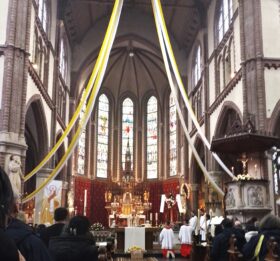
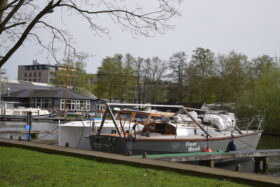
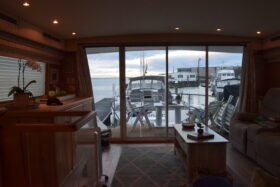
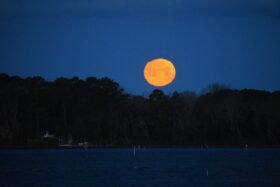
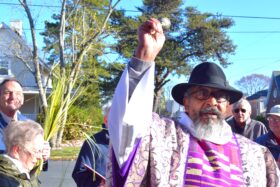
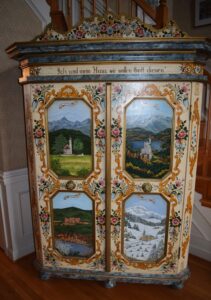
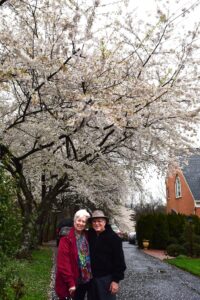
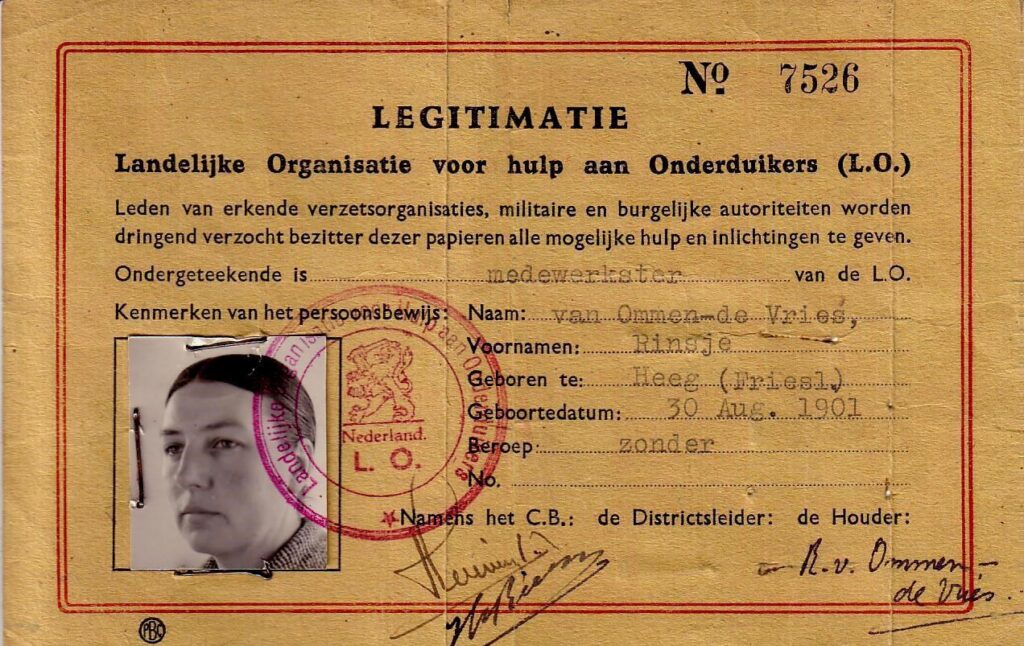
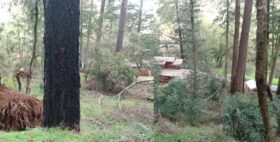
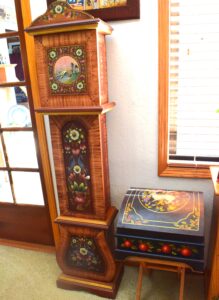

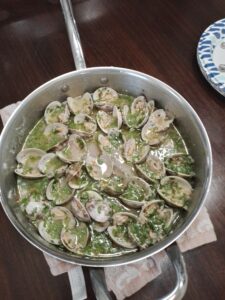
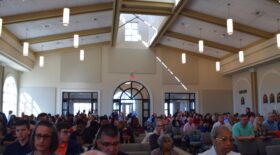
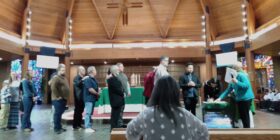
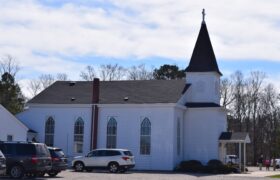
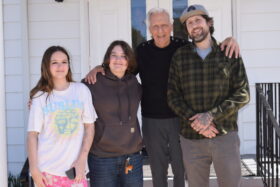
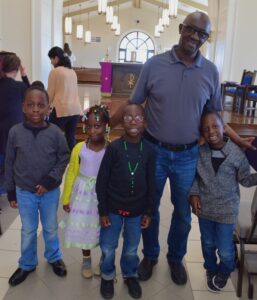
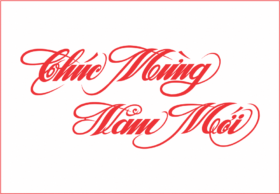

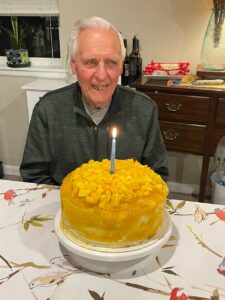 Mango Cake by Cate
Mango Cake by Cate
